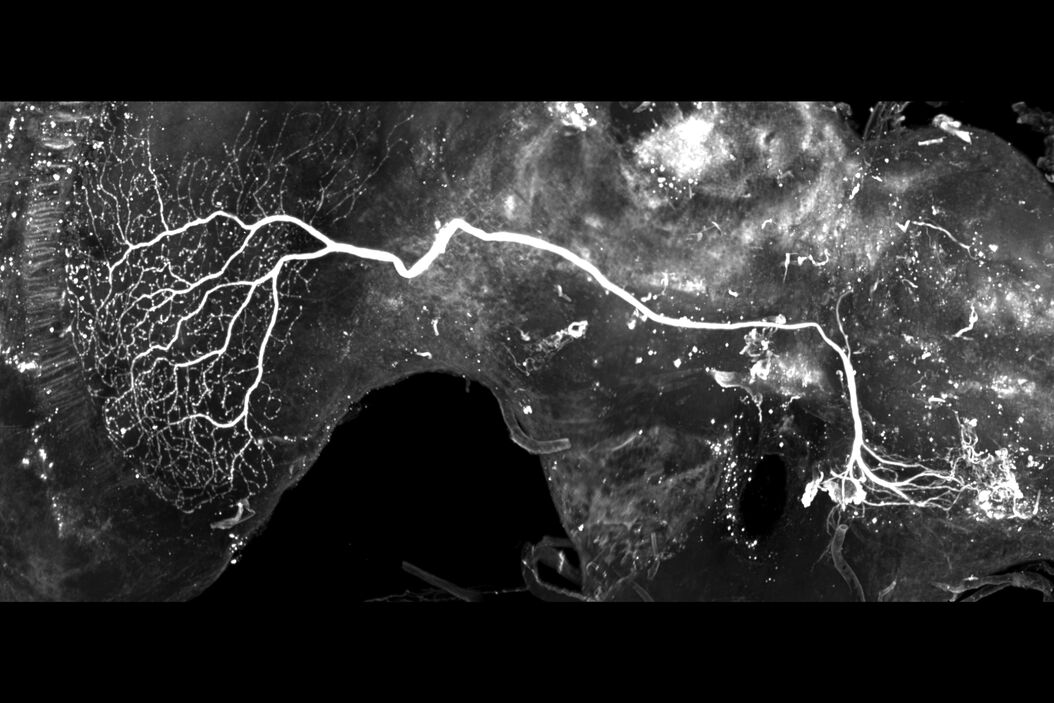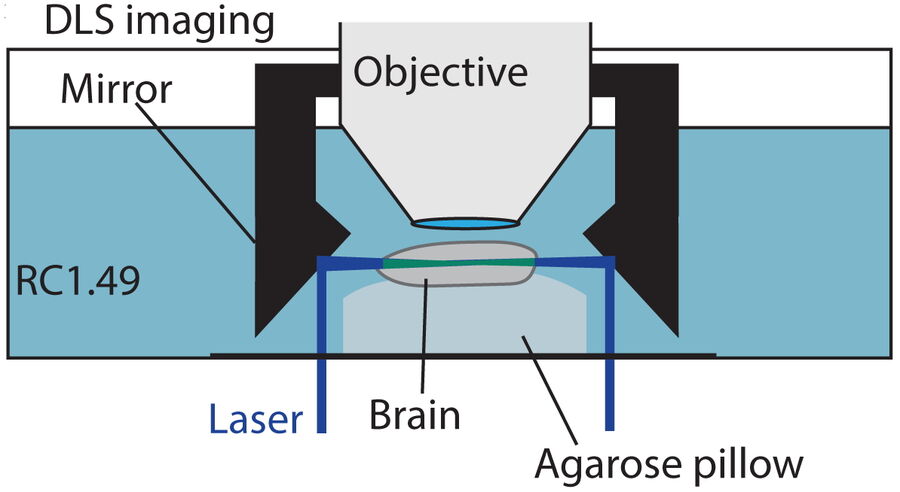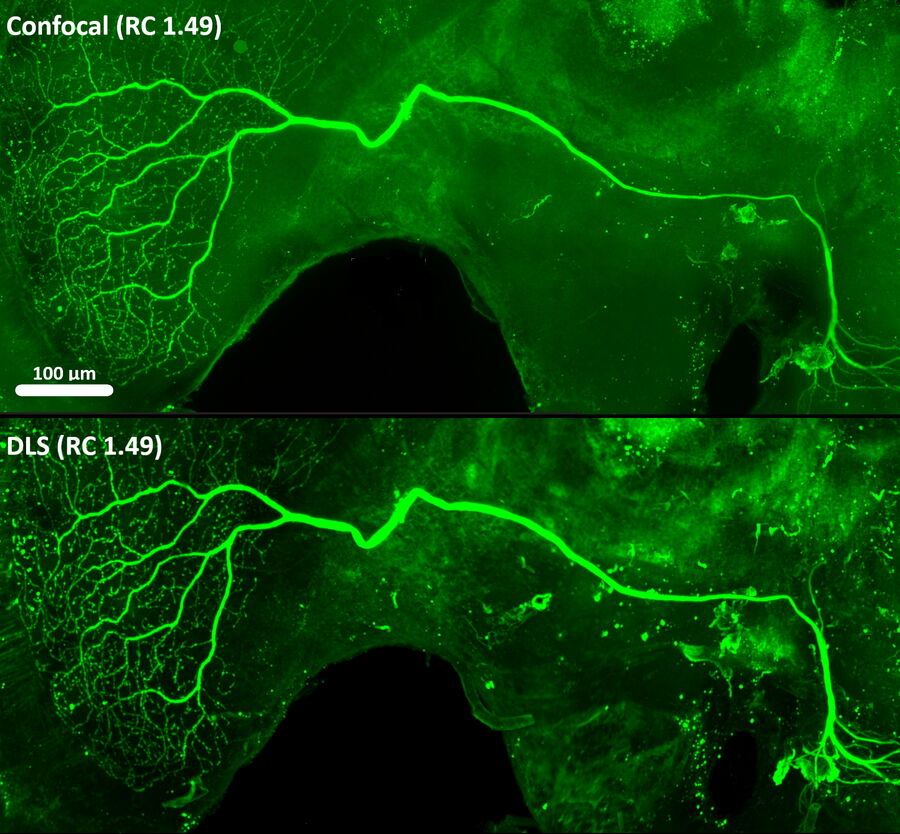Brains were imaged with the Digital LightSheet (DLS) from Leica Microsystems. It allows the user to choose between several detection objectives and mounting frames enabling high-resolution visualization. Users can also take full advantage of all the structural details revealed within the 3D cleared insect brains.
Bekkouche B.M.B., Fritz H.K.M., Rigosi E. & O'Carroll D.C.:
Comparison of Transparency and Shrinkage During Clearing of Insect Brains Using Media With Tunable Refractive Index
Front. Neuroanat., 20 November 2020, https://doi.org/10.3389/fnana.2020.599282
https://www.frontiersin.org/articles/10.3389/fnana.2020.599282/full
Related Articles
-
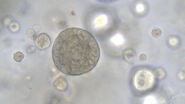
Overcoming Observational Challenges in Organoid 3D Cell Culture
Learn how to overcome challenges in observing organoid growth. Read this article and discover new…
Apr 08, 2024Read article -

How do Cells Talk to Each Other During Neurodevelopment?
Professor Silvia Capello presents her group’s research on cellular crosstalk in neurodevelopmental…
Apr 03, 2024Read article -
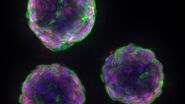
How to Get Deeper Insights into your Organoid and Spheroid Models
In this eBook, learn about key considerations for imaging 3D cultures, such as organoids and…
Nov 22, 2023Read article

